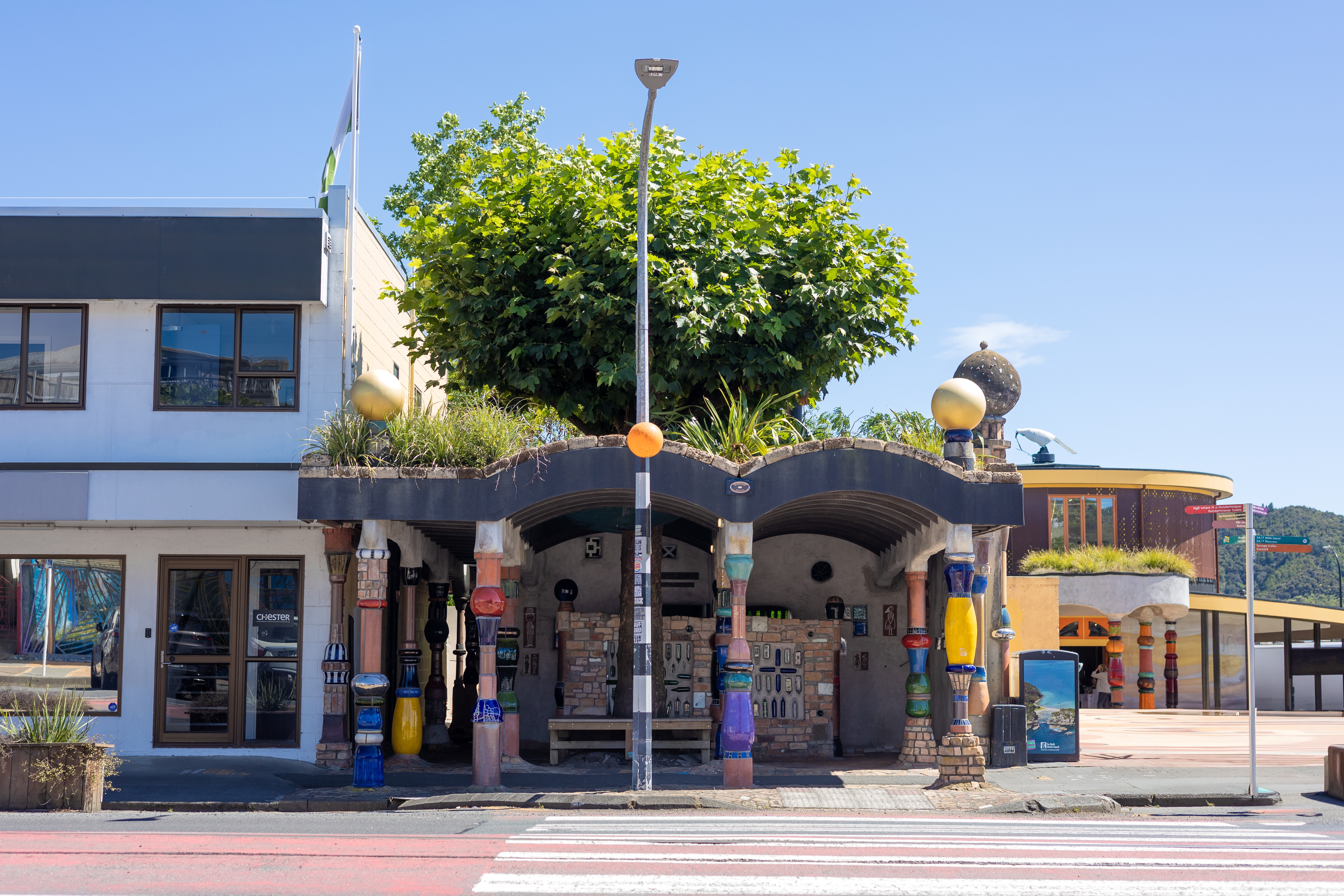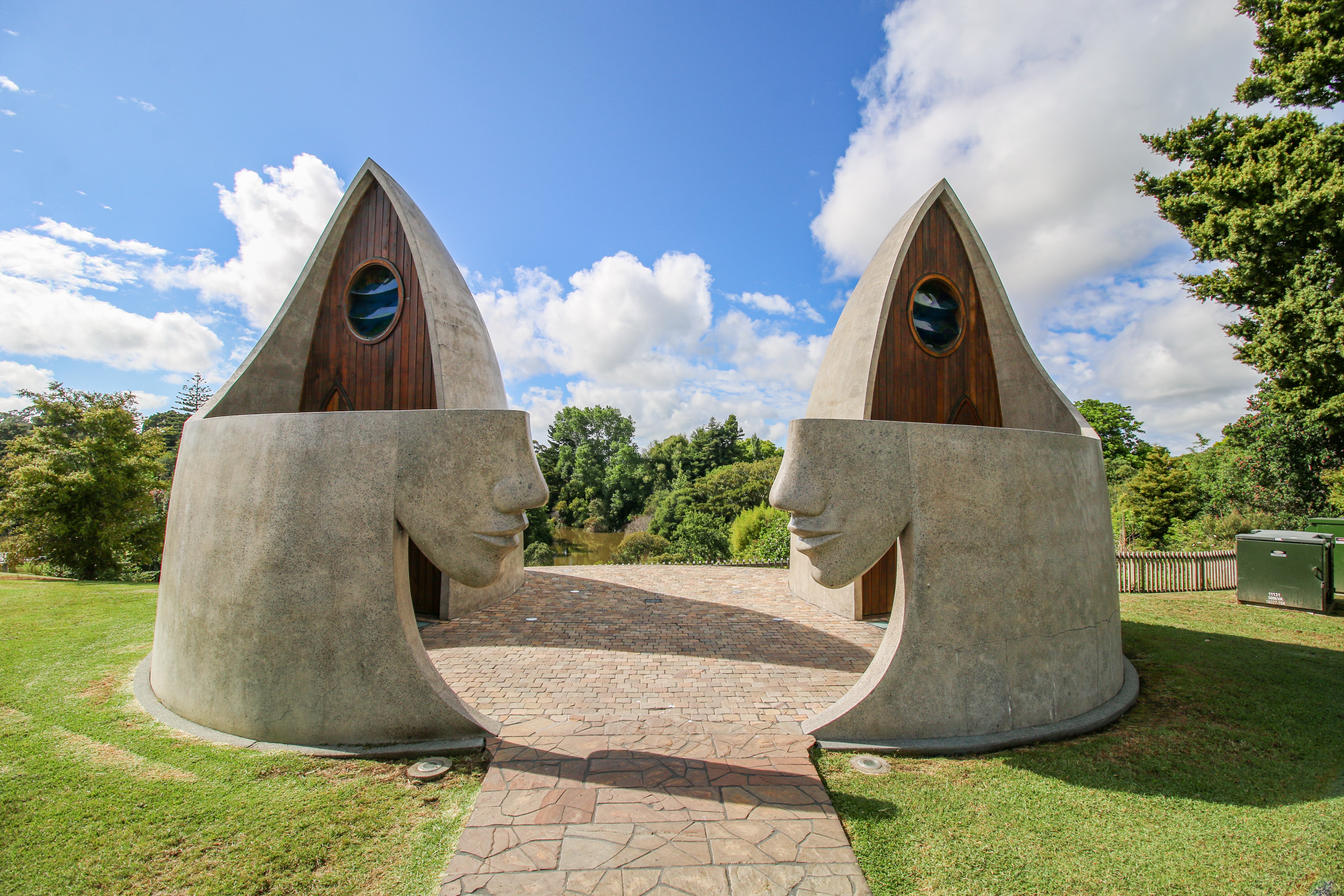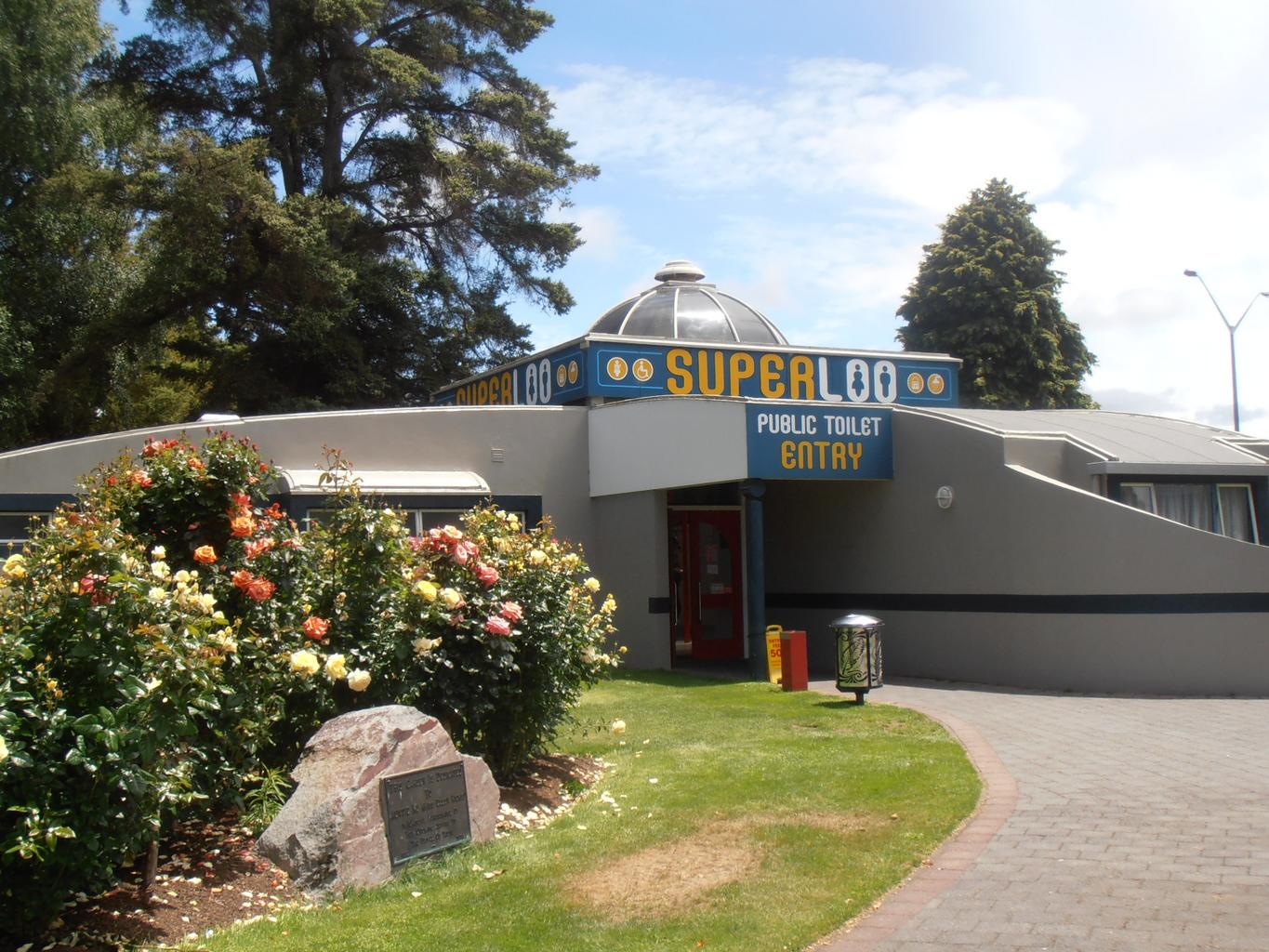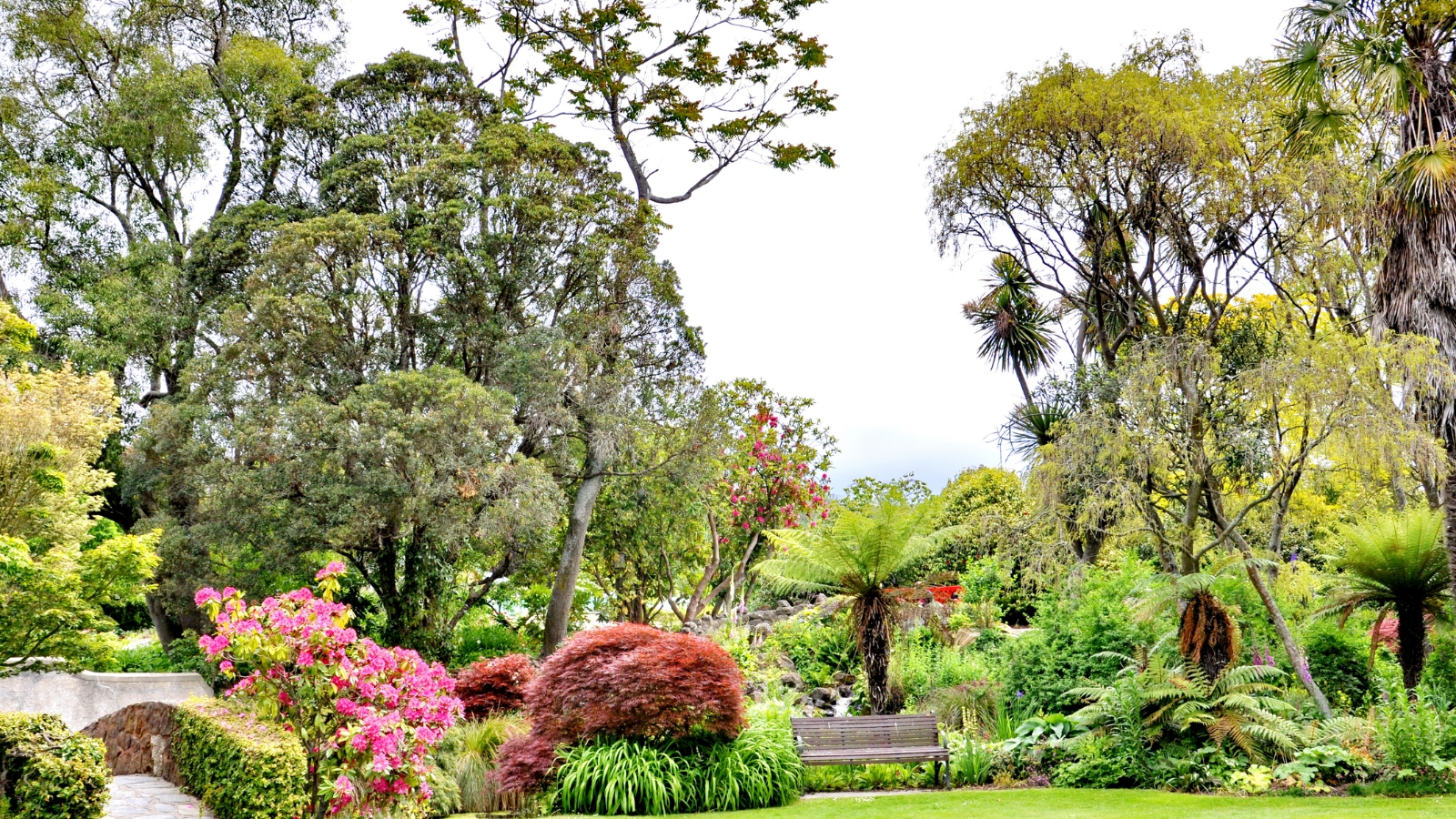Feature article
Meet the Finalists for People's Choicest Public Toilet
Have your say on the best public toilet in New Zealand! Vote for People’s Choicest and celebrate how Kiwi live.
Toilet tourism is something New Zealand excels at and can afford to do. It’s a great way to get people to stop in your town. Sure, there’s a deeply functional reason for visiting, but it’s also infrastructure that can showcase architectural cleverness, creativity, eco-cred, or a beautiful view.
The finalists for the Choicest Public Toilets in New Zealand are the Hundertwasser Toilets in Kawakawa, Matakana Public Toilets, and Taupo’s Superloo.
Hundertwasser Toilets, Kawakawa
These public toilets are a literal work of art, putting the small Northland town of Kawakawa on the map.
Built in 1999, this Northland loo is New Zealand’s most photographed public toilet, attracting around 250,000 visitors a year. It has been officially declared a Category 1 historic place of significance, despite being just 25 years old.
In 1998, the Kawakawa business community convinced Austrian artist Friedensreich Hundertwasser, who lived in the area, to add his trademark flair to the existing utilitarian concrete block structure. Local Bay of Islands College students prepared the ceramic tiles, the bricks came from a former Bank of New Zealand building, and the construction was completed by community volunteers.Outside, colorful columns create a veranda over the footpath, and a cobbled walkway made from recycled bricks leads to the entrance. Inside, there is a riot of color—uneven floors and curves surround functional ceramics and tapware. The floors feature a mix of large and small colored tiles, while recycled glass bottles are used as windows that allow light but also provide privacy. The roof is a living roof, which includes flax, native grasses, and tree tenants.Harmony with nature when nature calls.
Matakana
A surreal and spiritual place to unburden yourself.
The design, by Steffan de Haan—a first-year Elam Art School student—nods to the significance of boat building in the region. The structure features upturned boat hulls made from recycled kauri wood. The half-face sculptures guarding the toilet entrances are crafted from molded concrete, while the rest of the structure is made with concrete over wooden frames. The facades and doors of each room are also made from recycled kauri, with copper edging.
Inside, the floors and one wall are adorned with mosaics of orange stone, and stained-glass porthole windows allow diffused light to reach down to the floor. It’s a moment to reflect on something bigger than us and our bodily functions.
Located at the main roundabout near the Matakana Wharf Reserve, this artistic public convenience was proposed in 2002 and took seven years to complete, partly due to a change in location. The project cost $400,000— a hefty sum for a public restroom—but the local community contributed one-third of the cost through fundraising, with many artists and contractors donating their time.
As one visitor put it, "It feels a bit like going to the bathroom in a church."
Superloo, Taupo
Taupo's Superloo is the future of public ablution facilities. And it’s so very clean and green.
Built in 1993 on the waterfront, it offers glorious lake views and is conveniently located near popular public spaces. This public pit stop stands out for its sleek, modern design and high-tech hygiene: automatic doors, lights, and taps to minimize germ-sharing with every tourist in town. A self-cleaning floor system and eco-friendly features, such as water-saving flush technology—low-flow toilets and sensors that reduce water waste—make it a standout.
The most impressive feature? A front desk and receptionist to greet visitors. For just $5, you can enjoy a hot shower, complete with a towel, shampoo, and soap—a deal that’s hard to beat. As one user enthused, “The water pressure is amazing! It almost rips your skin off.” Another praised the 2-ply toilet paper, a welcome upgrade from the usual 1-ply found in many public restrooms.
Originally charging 50 cents per pee, the Superloo became free for all in 2022, following the challenges of Covid restrictions. What a relief!
Search
Other articles you might like



.png)




